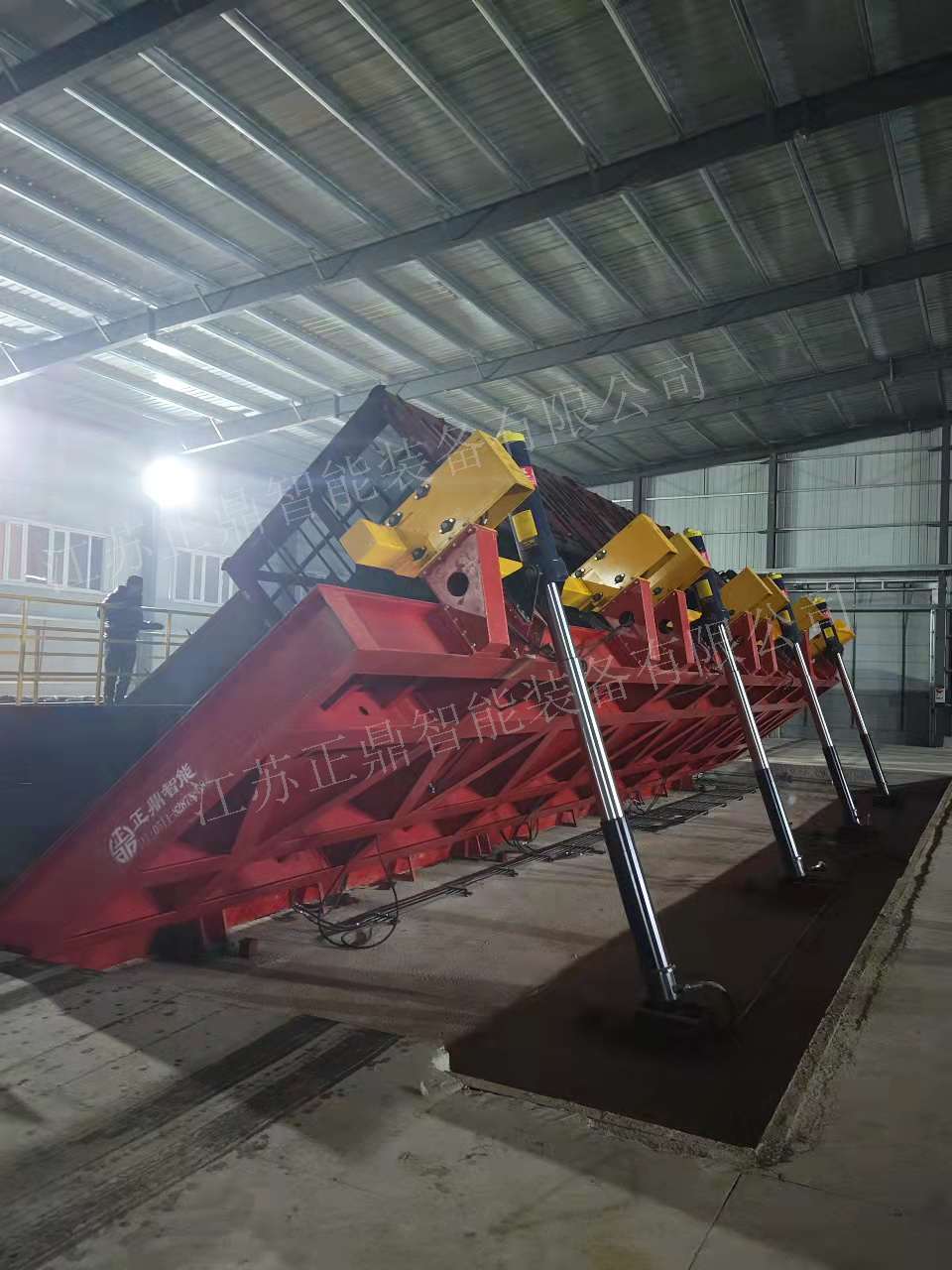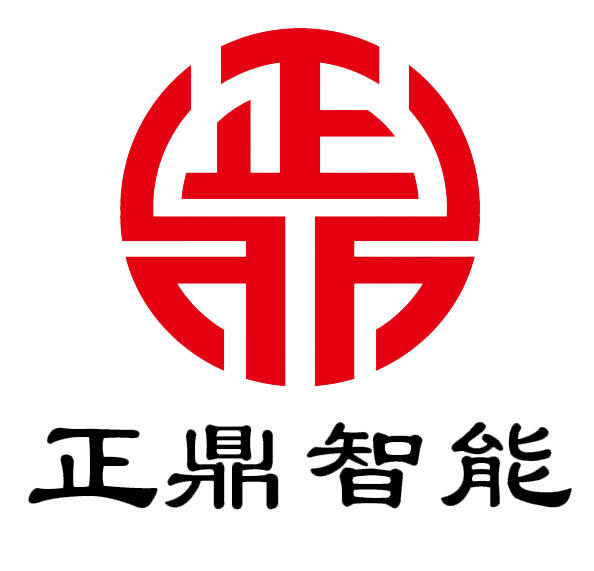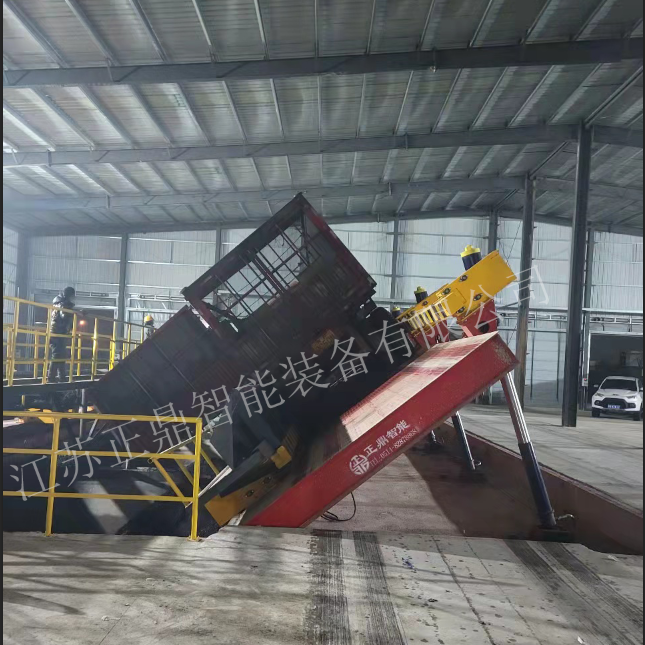ອະນາຄົດຂອງການຂົນສົ່ງ: ການປ່ຽນແປງຫ້ອງການສະຫຼະພັນທົ່ວໂລກຜ່ານການອັດຕະໂນມັດ
ທັດສະນິຍະພາບຂອງການຈັດສົ່ງສິນຄ້າທົ່ວໂລກ ກຳລັງປ່ຽນແປງຢ່າງຮຸນແຮງ ໃນຂະນະທີ່ ລະບົບຖອກຕູ້ຄອນເທັນເນີອັດຕະໂນມັດ ກຳລັງປ່ຽນແປງວິທີການຂອງການຂົນສົ່ງສິນຄ້າໄປທົ່ວໂລກ. ການປະຕິວັດດ້ານເຕັກໂນໂລຊີນີ້ ບໍ່ແມ່ນພຽງແຕ່ການແທນທີ່ແຮງງານຄົນ – ແຕ່ມັນແມ່ນການຈິນຕະນາການໃໝ່ຂອງລະບົບຫ່ວງສາຍການສະໜອງທັງໝົດ. ດ້ວຍປະລິມານການຄ້າທົ່ວໂລກທີ່ມີຂະໜາດໃຫຍ່ຂຶ້ນກວ່າທີ່ຜ່ານມາ, ຄວາມຕ້ອງການໃນການແກ້ໄຂບັນຫາການຖອກຕູ້ຄອນເທັນເນີຢ່າງມີປະສິດທິພາບ ຈຶ່ງມີຄວາມສຳຄັນຫຼາຍກວ່າທີ່ຜ່ານມາ.
ວິທີການຖອດຕູ້ສິນຄ້າແບບດັ້ງເດີມ ມັກຈະສ້າງຈຸດຕິດຂັດໃນທ່າເຮືອ ແລະ ຫໍ້ສາງ, ສົ່ງຜົນໃຫ້ເກີດການຈັດສົ່ງຊ້າ ແລະ ບໍ່ມີປະສິດທິພາບ. ແຕ່ຢ່າງໃດກໍຕາມ, ການເກີດຂຶ້ນຂອງເຕັກໂນໂລຊີອັດຕະໂນມັດທີ່ຊັບຊ້ອນ ກໍາລັງປ່ຽນແປງເລື່ອງນີ້, ໂດຍສັນຍາວ່າຈະເຮັດໃຫ້ການຈັດການໄດ້ໄວຂຶ້ນ, ປອດໄພຫຼາຍຂຶ້ນ ແລະ ຫຼຸດຜ່ອນຕົ້ນທຶນຢ່າງຫຼວງຫຼາຍ. ໃນຂະນະທີ່ພວກເຮົາກໍາລັງກ້າວເຂົ້າສູ່ປີ 2025, ລະບົບເຫຼົ່ານີ້ກໍາລັງກາຍເປັນລະບົບທີ່ຊັບຊ້ອນຫຼາຍຂຶ້ນ, ໂດຍການນຳໃຊ້ປັນຍາປະດິດ, ການຮຽນຮູ້ຂອງເຄື່ອງຈັກ ແລະ ຫຸ່ນຍົນຂັ້ນສູງ.
ເຕັກໂນໂລຊີຫຼັກທີ່ຂັບເຄື່ອນການປະດິດສ້າງໃນການຖອດຕູ້ສິນຄ້າອັດຕະໂນມັດ
ປັນຍາປະດິດ ແລະ ລະບົບທັດສະນະຄະຕິຂອງຄອມພິວເຕີ
ລະບົບຖອດຕູ້ຄອນເທັນເນີທີ່ທັນສະໄໝນຳໃຊ້ ອາລົງກະລິດ (AI) ທີ່ທັນສະໄໝ ແລະ ເຕັກໂນໂລຊີມື້ຂອງຄອມພິວເຕີ້ເພື່ອປັບປຸງຂະບວນການຖອດຕູ້. ລະບົບເຫຼົ່ານີ້ສາມາດວິເຄາະຮູບແບບຂອງສິນຄ້າ, ກຳນົດລຳດັບການຖອດຕູ້ທີ່ເໝາະສົມທີ່ສຸດ, ແລະ ປັບຕົວເຂົ້າກັບຂະໜາດ ແລະ ຮູບຊົງຂອງແຜງຕ່າງໆໄດ້ທັນທີ. ການນຳໃຊ້ການຮຽນຮູ້ເລິກ (deep learning) ໃຫ້ລະບົບສາມາດປັບປຸງປະສິດທິພາບຢ່າງຕໍ່ເນື່ອງ, ຮຽນຈາກແຕ່ລະການຖອດຕູ້ເພື່ອຍົກສູງປະສິດທິພາບ ແລະ ຫຼຸດຜ່ອນຂໍ້ຜິດພາດ.
ລະບົບມື້ຂອງຄອມພິວເຕີ້ທີ່ຕິດຕັ້ງກ້ອງຄວາມລະອຽດສູງ ແລະ ຄວາມສາມາດໃນການສະແກນ 3D ສ້າງແຜນທີ່ລະອຽດຂອງເນື້ອໃນຕູ້ຄອນເທັນເນີ, ເຮັດໃຫ້ສາມາດວາງແຜນ ແລະ ດຳເນີນການຖອດຕູ້ໄດ້ຢ່າງຖືກຕ້ອງ. ເຕັກໂນໂລຊີນີ້ສາມາດກວດພົບອັນຕະລາຍທີ່ອາດເກີດຂຶ້ນ, ສິນຄ້າທີ່ເສຍຫາຍ, ແລະ ຈຸດຈັບທີ່ເໝາະສົມທີ່ສຸດ, ຮັບປະກັນການຈັດການສິນຄ້າທີ່ຫຼາກຫຼາຍຢ່າງປອດໄພ ແລະ ມີປະສິດທິພາບ.
ລະບົບຫຸ່ນຍົນ ແລະ ເຕັກໂນໂລຊີ End-Effector
ລະບົບຫຸ່ນຍົນປະສິດທິພາບທີ່ຕິດຕັ້ງເຄື່ອງມືຂັ້ນສູງ ແມ່ນເປັນພື້ນຖານຂອງການດຳເນີນງານຖອດສິນຄ້າອອກຈາກຕູ້ຄອນເທັນເນີໂດຍອັດຕະໂນມັດ. ຫຸ່ນຍົນເຫຼົ່ານີ້ໃຊ້ເຄື່ອງມືຈັບທີ່ທັນສະໄໝ ເຊິ່ງສາມາດຈັດການກັບປະເພດຫີບຫໍ່ທີ່ແຕກຕ່າງກັນ ຈາກກ່ອງທົ່ວໄປ ໄປຫາຮູບຮ່າງທີ່ບໍ່ປົກກະຕິ. ເຄື່ອງມືຈັບລຸ້ນໃໝ່ລ້າສຸດ ປະສົມປະສານເຕັກໂນໂລຊີດູດລະດັບສູນກັບເຄື່ອງຈັບເຊິງກົນຈັກ ເຊິ່ງຊ່ວຍໃຫ້ມີຄວາມຫຼາກຫຼາຍ ແລະ ຄວາມໜ້າເຊື່ອຖືໃນການຖອດສິນຄ້າອອກຈາກຕູ້ຄອນເທັນເນີ.
ລະບົບຄວບຄຸມແບບປັບໂຕໄດ້ ຊ່ວຍໃຫ້ຫຸ່ນຍົນເຫຼົ່ານີ້ສາມາດປັບການເຄື່ອນໄຫວ ແລະ ການໃຊ້ແຮງຂອງພວກມັນໃນທັນທີ ເພື່ອໃຫ້ແນ່ໃຈວ່າຈະຈັດການຢ່າງອ່ອນໂຍນກັບສິ່ງຂອງທີ່ງ່າຍຕໍ່ການແຕກຫັກ ໃນຂະນະທີ່ຮັກສາຄວາມໄວໃນການດຳເນີນງານສຳລັບຫີບຫໍ່ທີ່ແຂງແຮງ. ຄວາມຍືດຍຸ່ນນີ້ມີຄວາມສຳຄັນຫຼາຍໃນການຮັກສາປະສິດທິພາບໃນການຈັດການກັບສິນຄ້າທີ່ຫຼາກຫຼາຍ ແລະ ສອດຄ່ອງກັບຄວາມຕ້ອງການຂອງລູກຄ້າທີ່ແຕກຕ່າງກັນ.

ປະໂຫຍດດ້ານການດຳເນີນງານ ແລະ ຜົນກະທົບດ້ານເສດຖະກິດ
ປັບປຸງຜົນຜະລິດ ແລະ ຕົວຊີ້ວັດປະສິດທິພາບ
ການນຳໃຊ້ລະບົບອັດຕະໂນມັດໃນການຖອດສິນຄ້າອອກຈາກຕູ້ກັບໄດ້ສະແດງໃຫ້ເຫັນເຖິງການປັບປຸງຢ່າງຫຼວງຫຼາຍໃນປະສິດທິພາບຂອງການດຳເນີນງານ. ລະບົບເຫຼົ່ານີ້ສາມາດດຳເນີນງານຢ່າງຕໍ່ເນື່ອງ ແລະ ສາມາດຮັກສາລະດັບປະສິດທິພາບທີ່ສອດຄ້ອງກັນໄດ້ຕະຫຼອດການເຮັດວຽກເປັນເວລາດົນ. ຂໍ້ມູນສະແດງໃຫ້ເຫັນວ່າ ວິທີການອັດຕະໂນມັດສາມາດບັນລຸຄວາມໄວໃນການຖອດສິນຄ້າອອກຈາກຕູ້ກັບໄດ້ໄວຂຶ້ນເຖິງ 3 ເທົ່າ ຕອງວິທີການແບບດັ້ງເດີມ, ເຊິ່ງຊ່ວຍຫຼຸດຜ່ອນເວລາທີ່ສິນຄ້າຢູ່ທີ່ທ່າເຮືອ ແລະ ຄ່າໃຊ້ຈ່າຍທີ່ກ່ຽວຂ້ອງລົງໄດ້ຢ່າງຫຼວງຫຼາຍ.
ຍິ່ງໄປກວ່ານັ້ນ, ລະບົບເຫຼົ່ານີ້ມີຄວາມແນ່ນອນ ແລະ ຄວາມສອດຄ້ອງສູງ, ເຮັດໃຫ້ເກືອບຈະກຳຈັດຂໍ້ຜິດພາດຂອງມະນຸດອອກໄດ້ ແລະ ຫຼຸດຜ່ອນອັດຕາການເສຍຫາຍຂອງຜະລິດຕະພັນລົງໄດ້ເຖິງ 90%. ຄວາມແນ່ນອນທີ່ດີຂຶ້ນນີ້ບໍ່ພຽງແຕ່ຊ່ວຍປ້ອງກັນສິນຄ້າທີ່ມີຄ່າ ແຕ່ຍັງຊ່ວຍໃຫ້ການດຳເນີນງານດ້ານການຈັດສົ່ງຕໍ່ໄປມີຄວາມລຽບລຽງຂຶ້ນ, ເຮັດໃຫ້ຫ້ອງການສະໜອງມີຄວາມໜ້າເຊື່ອຖື ແລະ ສາມາດຄາດເດົາໄດ້ດີຂຶ້ນ.
ການເພີ່ມປະສິດທິພາບດ້ານຕົ້ນທຶນ ແລະ ການວິເຄາະ ROI
ໃນຂະນະທີ່ການລົງທຶນເບື້ອງຕົ້ນໃນເຕັກໂນໂລຊີການຖອດສິນຄ້າອອກຈາກຕູ້ຄອນເທັນເນີແບບອັດຕະໂນມັດອາດເບິ່ງຄືວ່າຈຳນວນຫຼວງຫຼາຍ, ແຕ່ຜົນປະໂຫຍດດ້ານການເງິນໃນໄລຍະຍາວນັ້ນກໍ່ໜ້າດຶງດູດ. ອົງກອນທີ່ນຳໃຊ້ລະບົບເຫຼົ່ານີ້ມັກຈະເຫັນຜົນຕອບແທນການລົງທຶນພາຍໃນ 18-24 ເດືອນ, ໂດຍມີປັດໄຈສົ່ງເສີມຈາກຕົ້ນທຶນແຮງງານທີ່ຫຼຸດລົງ, ຄວາມສາມາດໃນການຂົນສົ່ງທີ່ເພີ່ມຂຶ້ນ ແລະ ຄວາມເສຍຫາຍຂອງສິນຄ້າທີ່ຫຼຸດລົງ.
ການປະຢັດຄ່າໃຊ້ຈ່າຍດ້ານແຮງງານນັ້ນກວ້າງກວ່າຄ່າຈ້າງງານໂດຍກົງ, ລວມເຖິງການຫຼຸດລົງຂອງຄ່າທຳນຽມປະກັນໄພ, ການຮ້ອງຂໍຄ່າຊົດເຊີຍແຮງງານ ແລະ ຄ່າໃຊ້ຈ່າຍດ້ານການຝຶກອົບຮົມ. ນອກຈາກນັ້ນ, ຄວາມສາມາດໃນການດຳເນີນງານ 24/7 ໂດຍບໍ່ມີຄວາມອິດເມື່ອຍ ຫຼື ພັກຜ່ອນ ຊ່ວຍໃຫ້ການນຳໃຊ້ສິ່ງອຳນວຍຄຳນວນ ແລະ ປະສິດທິພາບຂອງຊັບສິນສູງສຸດ, ເຊິ່ງເຮັດໃຫ້ຂໍ້ດີດ້ານເສດຖະກິດຂອງການອັດຕະໂນມັດດີຂຶ້ນອີກ.
ຄວາມປອດໄພ ແລະ ຜົນກະທົບຕໍ່ແຮງງານ
ມາດຕະຖານຄວາມປອດໄພໃນສະຖານທີ່ເຮັດວຽກທີ່ດີຂຶ້ນ
ລະບົບການຖອດສິນຄ້າອອກຈາກຕູ້ຄອນເທີນເນີໂດຍອັດຕະໂນມັດຊ່ວຍຫຼຸດຜ່ອນບາດເຈັບໃນທີ່ເຮັດວຽກຢ່າງຫຼວງຫຼາຍ ໂດຍການຂຈັດມະນຸດອອກຈາກສະພາບແວດລ້ອມທີ່ມີຄວາມສ່ຽງ. ການຖອດສິນຄ້າອອກຈາກຕູ້ຄອນເທີນເນີແບບດັ້ງເດີມມັກຈະເປີດເຜີຍພະນັກງານຕໍ່ຄວາມສ່ຽງຕ່າງໆ ເຊັ່ນ: ວັດຖຸຕົກ, ບາດເຈັບຈາກການເຮັດວຽກຊ້ຳໆ, ແລະ ການສຳຜັດກັບອຸນຫະພູມທີ່ເກີນຂອບເຂດ. ການອັດຕະໂນມັດຈະຂຈັດຄວາມສ່ຽງເຫຼົ່ານີ້ອອກໄປ ໃນຂະນະທີ່ຮັກສາບົດບາດດ້ານຄວາມປອດໄພຢ່າງຕໍ່ເນື່ອງ.
ລະບົບທີ່ທັນສະໄໝມີຄຸນສົມບັດດ້ານຄວາມປອດໄພຫຼາຍຢ່າງ ລວມທັງປຸ່ມຢຸດສຸກເສີນ, ລະບົບການຫຼີກລ້ຽງການชนກັນ, ແລະ ຄວາມສາມາດໃນການຕິດຕາມຕາມເວລາຈິງ. ສິ່ງປ້ອງກັນເຫຼົ່ານີ້ຮັບປະກັນຄວາມປອດໄພຂອງອຸປະກອນ ແລະ ຄວາມປອດໄພຂອງພະນັກງານທີ່ຢູ່ໃກ້ຄຽງ, ເຮັດໃຫ້ສະພາບແວດລ້ອມການເຮັດວຽກປອດໄພຂຶ້ນ.
ການພັດທະນາແຮງງານ ແລະ ທັກສະ
ແທນທີ່ຈະຍົກເລີກວຽກງານ, ລະບົບການຖອດສິນຄ້າອັດຕະໂນມັດຈາກຕູ້ຄອນເທີເນີໄດ້ປ່ຽນແປງຄວາມຕ້ອງການຂອງແຮງງານ. ການຫັນປ່ຽນໄປສູ່ການອັດຕະໂນມັດໄດ້ສ້າງຕຳແໜ່ງໃໝ່ໆທີ່ສຸມໃສ່ການດຳເນີນງານ, ບຳລຸງຮັກສາ ແລະ ປັບປຸງລະບົບ. ການພັດທະນານີ້ຕ້ອງການແຮງງານທີ່ມີທັກສະດ້ານເຕັກນິກ ແລະ ຄວາມຊຳນິຊຳນານດ້ານດິຈິຕອນທີ່ດີຂຶ້ນ, ເຊິ່ງເປີດເສັ້ນທາງອາຊີບໃໝ່ໃນຂົງເຂດການຈັດສົ່ງສິນຄ້າອັດຕະໂນມັດ.
ອົງກອນຕ່າງໆທີ່ນຳໃຊ້ລະບົບເຫຼົ່ານີ້ ກຳລັງລົງທຶນໃນໂຄງການຝຶກອົບຮົມຢ່າງຄົບຖ້ວນ, ເພື່ອຊ່ວຍໃຫ້ພະນັກງານທີ່ມີຢູ່ສາມາດປ່ຽນຜ່ານໄປສູ່ຕຳແໜ່ງໃໝ່. ໂຄງການຍົກລະດັບທັກສະນີ້ ຮັບປະກັນຄວາມຕໍ່ເນື່ອງຂອງແຮງງານ ໃນຂະນະທີ່ສ້າງຄວາມຊຳນິຊຳນານດ້ານເຕັກນິກທີ່ຈຳເປັນສຳລັບການດຳເນີນງານດ້ານການຈັດສົ່ງສິນຄ້າໃນຍຸກທັນສະໄໝ.
ແນວໂນ້ມແລະການພັດທະນາໃນອະນາຄົດ
ການເຊື່ອມຕໍ່ກັບເຕັກໂນໂລຊີທ່າເຮືອອັດສະຈັກ
ອະນາຄົດຂອງການອັດຕະໂນມັດການປົດຖັງ container ແມ່ນຢູ່ໃນການເຊື່ອມໂຍງກັບຂໍ້ລິເລີ່ມທີ່ກວ້າງຂວາງຂອງທ່າເຮືອສະຫຼາດ. ລະບົບທີ່ເຊື່ອມຕໍ່ແບ່ງປັນຂໍ້ມູນໃນເວລາຈິງຊ່ວຍໃຫ້ມີການ ບໍາ ລຸງຮັກສາແບບຄາດຄະເນ, ການຈັດສັນຊັບພະຍາກອນທີ່ ເຫມາະ ສົມ, ແລະການ ດໍາ ເນີນງານທີ່ປະສານງານໃນສະຖານທີ່ທ່າເຮືອທັງ ຫມົດ. ການເຊື່ອມຕໍ່ນີ້ຂະຫຍາຍໄປສູ່ເຄືອຂ່າຍຂົນສົ່ງ, ເຮັດໃຫ້ມີການປະສານງານແບບບໍ່ມີຮອຍກັນລະຫວ່າງການຂົນສົ່ງທາງທະເລ, ທາງລົດໄຟ, ແລະທາງດ່ວນ.
ເຕັກໂນໂລຊີທີ່ພົ້ນເດັ່ນເຊັ່ນ: ເຄືອຂ່າຍ 5G ແລະຄອມພິວເຕີຂອບແມ່ນໍາກໍາລັງເພີ່ມຄວາມສາມາດຂອງລະບົບການປົດຖັງແບບອັດຕະໂນມັດ, ເຮັດໃຫ້ການຕັດສິນໃຈໄວຂຶ້ນ ແລະ ປະຕິບັດງານຕອບສະ ຫນອງ ໄດ້ໄວຂຶ້ນ. ຄວາມກ້າວຫນ້າເຫຼົ່ານີ້ ໄດ້ເປີດທາງໃຫ້ແກ່ການດໍາເນີນງານທ່າເຮືອທີ່ເປັນເອກະລາດແທ້ໆ, ບ່ອນທີ່ລະບົບຫຼາຍຢ່າງເຮັດວຽກຮ່ວມກັນເພື່ອເພີ່ມປະສິດທິພາບໃນການຈັດການສິນຄ້າ.
ການດໍາເນີນງານແບບຍືນຍົງ ແລະ ຜົນກະທົບຕໍ່ສິ່ງແວດລ້ອມ
ລະບົບການຖອດສິນຄ້າອອກຈາກຕູ້ຄອນເທີນເນີໂດຍອັດຕະໂນມັດ ມີສ່ວນຮ່ວມຢ່າງຫຼວງຫຼາຍໃນການບັນລຸເປົ້າໝາດ້ານຄວາມຍືນຍົງຂອງສິ່ງແວດລ້ອມ. ລະບົບທີ່ຂັບເຄື່ອນດ້ວຍໄຟຟ້າຊ່ວຍຫຼຸດຜ່ອນການປ່ອຍຄາບອນອອກສູ່ອາກາດ ຕ່າງຈາກອຸປະກອນທີ່ຂັບເຄື່ອນດ້ວຍດີເຊວແບບດັ້ງເດີມ, ໃນຂະນະທີ່ການດຳເນີນງານທີ່ມີຄວາມແນ່ນອນຊ່ວຍຫຼຸດຜ່ອນການໃຊ້ພະລັງງານ ແລະ ຂີ້ເຫຍື້ອ. ການເພີ່ມປະສິດທິພາບຂອງຂະບວນການຈັດການຕູ້ຄອນເທີນເນີ ຊ່ວຍຫຼຸດຜ່ອນເວລາທີ່ບໍ່ໄດ້ໃຊ້ງານ ແລະ ການເຄື່ອນຍ້າຍທີ່ບໍ່ຈຳເປັນ, ເຮັດໃຫ້ຜົນກະທົບຕໍ່ສິ່ງແວດລ້ອມຈາກການດຳເນີນງານດ້ານການຂົນສົ່ງຫຼຸດລົງອີກ.
ການພັດທະນາໃນອະນາຄົດ ເນັ້ນໜັກໃນການນຳໃຊ້ແຫຼ່ງພະລັງງານທີ່ຖ້າມາຈາກທຳມະຊາດ ແລະ ການນຳເອົາຫຼັກການດ້ານເສດຖະກິດແບບວົງຈອນມາໃຊ້ໃນການອອກແບບ ແລະ ດຳເນີນງານລະບົບ. ກິດຈະກຳເຫຼົ່ານີ້ ສອດຄ່ອງກັບເປົ້າໝາດ້ານຄວາມຍືນຍົງຂອງໂລກ ໃນຂະນະທີ່ຍັງຊ່ວຍປະຢັດຄ່າໃຊ້ຈ່າຍໃນການດຳເນີນງານ.
ຄໍາ ຖາມ ທີ່ ມັກ ຖາມ
ເວລາການຕິດຕັ້ງລະບົບການຖອດສິນຄ້າອອກຈາກຕູ້ຄອນເທີນເນີໂດຍອັດຕະໂນມັດ ໂດຍປົກກະຕິແມ່ນດົນປານໃດ?
ການຈັດຕັ້ງປະຕິບັດມັກໃຊ້ເວລາ 6-12 ເດືອນ, ລວມທັງການຕິດຕັ້ງລະບົບ, ການທົດສອບ ແລະ ການຝຶກອົບຮົມພະນັກງານ. ໂຄງຮ່າງເວລາແມ່ນແຕກຕ່າງກັນໄປຕາມຂະໜາດຂອງສະຖານທີ່, ພື້ນຖານໂຄງລ່າງທີ່ມີຢູ່ແລ້ວ ແລະ ຄວາມຕ້ອງການດ້ານການເຊື່ອມຕໍ່. ວິທີການແບບຂັ້ນຕອນມັກຈະຊ່ວຍໃຫ້ການລົບກວນກິດຈະກຳທີ່ກຳລັງດຳເນີນຢູ່ມີໜ້ອຍທີ່ສຸດ.
ລະບົບອັດຕະໂນມັດຈັດການກັບຂະໜາດຕູ້ຄອນເທີເນີ ແລະ ປະເພດສິນຄ້າທີ່ແຕກຕ່າງກັນແນວໃດ?
ລະບົບອັດຕະໂນມັດທີ່ທັນສະໄໝຖືກອອກແບບມາດ້ວຍຄວາມຍືດຍຸ່ນ, ສາມາດຈັດການກັບຕູ້ຄອນເທີເນີມາດຕະຖານ ISO ຕั້ງແຕ່ 20 ຫາ 53 ຟຸດ. ເຕັກໂນໂລຊີການຮັບຮູ້ ແລະ ການຈັບທີ່ທັນສະໄໝຊ່ວຍໃຫ້ລະບົບເຫຼົ່ານີ້ປັບຕົວເຂົ້າກັບປະເພດສິນຄ້າຕ່າງໆ, ຈາກກ່ອງທີ່ມີຮູບຮ່າງຄືກັນ ໄປຫາຮູບຮ່າງທີ່ບໍ່ປົກກະຕິ, ເພື່ອຮັບປະກັນການຈັດການຢ່າງມີປະສິດທິພາບສຳລັບປະເພດການຂົນສົ່ງທີ່ຫຼາກຫຼາຍ.
ລະບົບການຖອດສິນຄ້າອອກຈາກຕູ້ຄອນເທີເນີດ້ວຍລະບົບອັດຕະໂນມັດມີຄວາມຕ້ອງການໃນການບຳລຸງຮັກສາແນວໃດ?
ລະບົບເຫຼົ່ານີ້ຕ້ອງການການບຳລຸງຮັກສາແບບປ້ອງກັນຢ່າງສະໝໍ່າສະເໝີ, ໂດຍທົ່ວໄປແລ້ວຈະຖືກຈັດຕາມເວລາທີ່ບໍ່ມີການໃຊ້ງານຫຼາຍ. ລະບົບທີ່ທັນສະໄໝມີຄວາມສາມາດໃນການບຳລຸງຮັກສາແບບຄາດເດົາໄດ້, ໂດຍໃຊ້ຂໍ້ມູນຈາກເຊັນເຊີເພື່ອຄາດເດົາບັນຫາທີ່ອາດເກີດຂຶ້ນກ່ອນທີ່ຈະເຮັດໃຫ້ລະບົບຢຸດເຊົາການເຮັດວຽກ. ການອັບເດດຊອບແວແລະການກວດກາຄວາມຖືກຕ້ອງຢ່າງສະໝໍ່າສະເໝີກໍ່ເປັນສິ່ງຈຳເປັນສຳລັບການເຮັດວຽກທີ່ດີທີ່ສຸດ.

